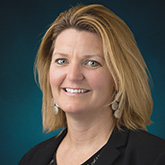The transition to ASCs is happening at a rapid rate, bringing special considerations & challenges
Ambulatory surgery centers (ASCs) are one of the fastest-growing areas in the healthcare industry. Research suggests that the ASC market is expected to grow at a compound annual growth rate of 6% and could be a $36 billion industry by 2023.

“At HCA Healthcare, we have just over 150 ambulatory facilities. I expect tremendous growth in ambulatory surgical centers and GI endoscopy centers over the next four to five years,” says Michael Hicks, M.D., MBA, MHCM, FACHE, Medical Director, HCA Healthcare’s Ambulatory Surgery Division.
Facing pushback
This increasing shift in care to ASCs is a trend that can’t be ignored. But this growth has been tempered by the preferential pricing given to procedures performed in hospitals.
“You can take the same procedure, same patient, same insurance company, same surgeon, same everything, and do that case in a hospital and get compensated at a much higher rate than you would in a surgery center,” explains Dr. Hicks. “Historically, that has been a drag on the migration of some of these cases. If you were the owner of a hospital, it didn’t make financial sense to shift to a place where you were going to get reimbursed at a lower rate.”

In 2021, the Centers for Medicare & Medicaid Services (CMS) took a big step to even the playing field when it announced it was eliminating its inpatient-only list (a list of procedures that were not eligible for reimbursement when done in either an ASC or as an outpatient). However, it recently reversed that decision in its 2022 ruling. “The reversal by CMS reinstituted 298 services back on the inpatient-only list,” shares Kim Wright, RN, AVP, Clinical Services, HealthTrust. “CMS explained that this was done for concerns of patient safety, insufficient details on rate-setting for procedures moved and a lack of transparency in the decision.”
Pushing forward
Despite these challenges, the shift to ambulatory care continues. This is partly due to the popularity of physician ownership in ASCs. Independent surgeons with ownership in an ASC have an extra financial incentive on top of the professional fee they receive for their service: an equity interest giving them a portion of any profit.
“The financial drain from the hospital side has been countered increasingly by the financial incentives on the physician side to build their own centers,” explains Dr. Hicks. “If a hospital wants to tighten the ties between physicians and the health system, a surgery center is a great way to do that because the physicians can co-invest right alongside the health system.”
Other factors contributing to the shift to ASCs include:
- Technological advances: “There are so many minimally invasive technologies and new techniques for anesthesia and pain control that procedures are less risky and less complicated. It’s easier for patients to go home the same day as surgery,” says Wright.
- Specialty care: With the focus on specific types of surgeries, such as orthopedic procedures, ASCs can excel at the care they provide. Some specialties lend themselves to ASC-level care, such as those with high-volume, repeatable outcomes.
- Patient preference: With COVID-19, many people felt scared to go to hospitals, making ASCs feel safer. But even before the pandemic, patients expressed a preference for the more inviting environment and personalized care of surgery centers—which often also came with a lower co-pay—compared to large hospitals. “The ambulatory surgery centers are easy and convenient. You just go, get taken care of and get sent home,” says Wright. “That’s very attractive to patients.”
“All of those things have come together and led us to where we are, and that is a significant migration out of procedures from hospitals,” Dr. Hicks adds. “And I think there are going to be more procedures and more kinds of patients that we can bring into the space and do it very well.”
Supply chain considerations
A lack of scale and purchasing power can create obstacles in securing necessary supplies, especially for smaller or independent ASCs. Another common challenge is a lack of dedicated resources, with many ASC staff often wearing multiple hats.
Typically, in an ASC, you won’t find a material management manager or supply chain director. Instead, a clinical staff member could be tasked with wearing a materials management hat and a clinical hat, according to HealthTrust experts. That person could be checking in patients at the front desk and also ordering supplies.

There is a bright spot, however: ASCs don’t face all of the same expenses as hospitals, or at least not to the same degree. “Food expense is pretty significant for a hospital, but you’re not going to see much of that in a surgery center where everything is outpatient,” explains Haley Addis, PharmD, VP, Clinical Resource and Account Management, HealthTrust.
ASCs are also known for being innovative and leading the adoption of niche products. Physicians can do cost studies for products and acquire them a lot faster than hospitals that have to go through a standard value analysis process. It usually takes longer to implement a niche product in a hospital versus an ASC, experts say.
The impact of physician ownership of ASCs can’t be ignored in relation to supply chain. When physicians have an ownership stake in the surgical center, they’re more likely to be engaged in the supply chain process. So it’s imperative to have those physicians in vital conversations on business decisions, especially when it comes to high-end products that could mean shutting the doors because those products are so expensive, and the procedure isn’t generating revenue.
ASCs are built on efficiency, and part of creating that involves standardization whenever possible to help a procedure run more smoothly. This means, for example, looking for opportunities to build formularies and combining supplies into single packs to make room prep faster, decrease waste and allow for additional procedures in a day.
How GPOs can help
ASCs aim for a lean operation for better margins. This goal, along with the lack of specialized supply chain management staff, means that working with a group purchasing organization (GPO) can greatly impact an ASC’s bottom line.

“Our organization allows for somebody who is wearing many hats in a surgery center to focus on what they need to focus on. We can help them realize the value more quickly than if they were trying to do this on their own,” says Alia Schmidt, AVP, GPO Implementations, HealthTrust.
ASCs can expect savings of 8% to 12%, just by getting access to HealthTrust’s contracts. Changing purchasing patterns—for example, converting off-contract products to contracted products—can increase those savings by another 5% to 8%, Addis shares.
Here are some other ways an ASC can benefit from partnering with a GPO:
- Ability to use existing contracts or templates
- ASCs don’t need to spend extra time negotiating for the best price since pricing is firm for the length of the contract
- Ability to participate in bulk buys for capital equipment
- HealthTrust staff can help with data mining and identifying insights for more savings opportunities
Secrets to success
From a clinical point of view, the secret to success in the surgery center environment is selecting the right procedures and patients, explains Dr. Hicks. This means procedures that can be done safely in an ASC and patients without complex comorbidities.
From a business perspective, a hospital-owned ASC can allow health systems to build a presence in strategic markets.
HCA Healthcare expands its ASC operations in two ways: by purchasing existing facilities and building new ones. In both scenarios, the organization specifically looks at locations where it already has a significant market presence—some HCA Healthcare ASCs are even across the parking lot from existing hospitals. HCA Healthcare also considers the quality of physicians and their practices—either physicians who are a part of an existing ASC under consideration for purchasing, or local physicians who they could bring together to create a new surgical center.
Establishing an ASC is an opportunity to increase a hospital’s capacity for procedural care without building onto an existing hospital, which can often be more expensive and complicated than building a new and separate surgical center.
Involving physicians in the governance of surgical centers and treating them as true partners can also help with many aspects of the operation. However, Hicks shares that operating an ASC requires a specialized skill set. “I’ve seen hospitals acquire or build a surgery center and run it like the hospital. It’s not successful because it has inefficiencies that a hospital can tolerate, and it just doesn’t become an attractive place for a physician or a patient to be,” he says.
Health systems also need to keep in mind that although ASCs are typically reimbursed less than what a hospital would be by most payors, and surgical cases can help subsidize less-profitable departments in a hospital, a well-run ASC can still see nearly two times the margins of acute hospitals, according to McKinsey.
Acute care hospitals and ASCs will continue to have an important role in our health system, shares Dr. Hicks, but that role is changing. “I don’t know ultimately where it’s going to end up, but I see only continued growth potential for surgery centers,” he says. “At some point, the American healthcare system will have to pivot into a value-based or outcomes-based care model. And I think surgery centers are positioned nicely as part of the solution for that.”
Watch for future editions of The Source for more information and actionable insights from HealthTrust’s Shift of Care Summit, Part 2. To participate in the summit, contact your HealthTrust Account Manager or email kimberly.wright@healthtrustpg.com.
Share Email ASCs, Q2 2022




